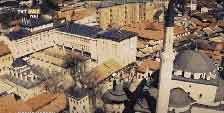|
Ghazi Husrev Bay - A lost part of history from Bosina Sarajivo |
Ghazi Husrev Bey
A Fascinating Lost Piece of Bosnian Islamic History The Power of Vision
Section – II – Visionary Achievements
2.1.1 Result of his vision – Young Muslims Movement
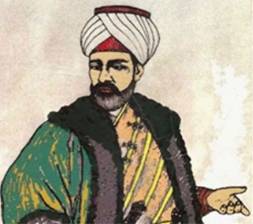
Ghazi Husrev-Bey (from 1480 till 1541) was born in Serres/Serez (Aegean Macedonia), Greece, in a house of Bosnian Muslim father “Ferhad-bey” (an immigrant from the Trebinje region) and a Turkish mother, who was the daughter of Sultan Beyazid II'. His father was serving as a Sanjak-bey (Governor) in Serres/Serez (Aegean Macedonia). His name was based on ottoman honorific epithet, “Ghazi”, and the royal first name as, “Husrev”. Based on his outstanding bravery and military expertise, he was awarded the title of “Ghazi” “A Hero”.
Before his arrival to Bosnia, he was regent of the “Smederovo Sanjak” and he also conducted diplomatic missions to European countries in the name of the Sultan. Husrev was Ottoman Governor (Sanjak-Bey) of Bosnia from 1521—1525, 1526—1534, and 1536 till 1541. He was a great visionary, an effective military strategist, and the greatest donor and builder of Sarajevo, the capital of modern Bosnia and Herzegovina. When arrived Sarajevo in 1521, he immediately started large construction projects in the town, despite his continuous military campaigns in Dalmatian, Croatia, and Hungary. Due to his social, economical and architectural contributions along with his “MADRASAH”, “WAQF”, “MASJID” and “LIBRARY”, he was also called as the second real founder of Sarajevo capital of Bosnia and Herzegovina.
In 1541 during an uprising of Montenegro against “Khilafah”, he was sent to protect the “Crnojevićs” and the local population. After fighting many battles to maintain order in the region, remained ultimately victorious, he got martyred while fighting Christians in Morocco, a small village in “Drobnjaci” (present-day Montenegro). He was buried on a small hill called “Hodžina glavica” (Imam's Peak). After his death and victory, his troops returned to Sarajevo.
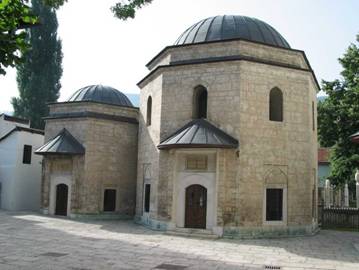
Here I would like to share a very interesting part of this research paper. On the top of the entrance of Ghazi Husrev-bey’s turbe, there is a stone tablet, which is 45 X 85 cm in size, with an engraved quote in the Arabic language. The inscription is engraved into six elliptical spaces and it is edged with thick lines. The year of Ghazi Husrev-bey’s death is mentioned in “Ebdžed” “Abjad - ابجد” (A method to calculate the numerical value of the Arabic letters) in the last half-verse. By adding the numerical values of the letters in the last half-verse we get the year 948 according to Hijri Calendar, which corresponds to the year 1541-42 AD, and it is the year of Ghazi Husrev-bey’s death.

Translation:
"Husrev-Bey was overtaken by darkness in a condition unlike a dream,
Among the people, he is known for his righteousness.
May God make his stay in the grave a light one
And grant peace to his soul and forgiveness (of sins)
In his prayer the supplicant uttered for him a chronogram:
May God have mercy on his soul every day."
In less than three years, he conquered the fortresses of Knin, Skradin and Ostrovica. He was appointed as Governor of Bosnia on 15 September 1521, becoming one of Sultan Suleiman I's most trusted men.
A restless campaign of conquests soon expanded to the towns of Greben, Sokol, Jezero, Vinac, Vrbaški Grad, Livač, Kamatin, Bočac, Udbina, Vrana, Modruč, and Požega.
Ghazi Husrev-Bey played a crucial role to overcome the Crusaders at the Battle of Mohács. His 10,000 special Akinji soldiers and his irregular cavalry of Turks, Bosnians and Crimean Tatars served as reserve soldiers in that battle. According to the Turkish military strategy, the Akinji soldiers circled the European knights while the Turkish infantry made a counterfeit retreat after the first assault. The Turkish army was composed of Ottoman Turks, Crimean Turks and Bosnians, while the Crusaders were composed of other Europeans. Ghazi Husrev-Bey and his forces also struggled against a power vacuum in Montenegro after the death of his ally “Skanderbeg Crnojević” in 1528.
• A Masjid was built for the local Muslim community which till today is the magnificent art of construction.
• At the same time, Ghazi Husrev-Bey built a famous library, the only oldest library which has one of the richest collections of old Eastern scriptures and handwritings. This library is restored recently with the help of the Qatar government.
• He built several religious educational institutes and Madrasah.
• As a great visionary, planner and strategist, Ghazi never overlooked the need for the drinking water. To make ample availability of drinking water supply, he made a vast system throughout the country, through which water was brought far away from seven kilometres to Sarajevo and channelled that supply into 40 public fountains only in Sarajevo, even in the winters. This was one of the first water supply systems in Europe at that time.
• One of the very impressive achievements was the construction of hot water bathing facilities called “Hammam” (Bathroom). One of those Hammam of the first half of the 16th century is preserved and still available as an archaeological site in its original condition. The Hammam had parallel facilities and in each facility, it had several sections. From main entrances to the waiting rooms under big doms called as “Shadirwans”, rooms for bathing and sweating, spaces for keeping up fire and heating of water and floor heating by using warm air.
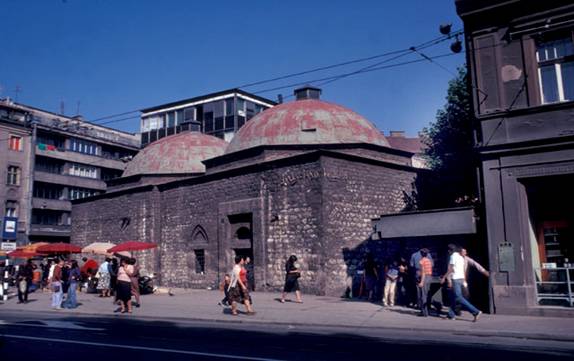
• Ghazi Husrev-Bey was very well aware of the economy and its importance in the city and region. Better the economy, quicker will the city growth and development. That’s why Ghazi kept on investing in the city of Sarajevo. He built the famous “Sarajevo Tashlihan” which was an ideally located meeting place for the rich businessmen and merchants, who were travelling through this city from the East and the West. Ghazi Husrev-Bey also built a “Bezistan”, a covered market for the different verity of traditional textiles from Bosnia, abroad and numerous cottage industry textile mills, in which hundreds of skilled workers were hired to produce high quality of textile with embroidery and handy crafts. These revolutionary achievements transformed Sarajevo into a hub for textile market and craft centre through which different caravans and groups of textile producers used to trade every day, bringing in and carrying away raw material and finished products like clothes and garments.
• To maintain harmony between different religions he built a Christian Orthodox church in Sarajevo, which was only a few hundred steps away from his monumental Masjid.
Section II – Visionary Achievements
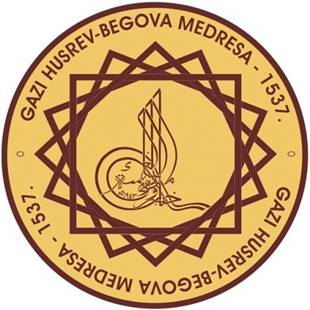
One of his major achievements for the Ummah and especially for the Muslims of Bosnia was his vision to “ establish such an institute which will reconnect the generations of Muslims of Bosnia with its Culture and Islam ”. I am writing vision as an achievement because, in his lifetime the institution was not established, the visioning process was completed but the construction of the building was under process. Later his followers and companions completed his vision, which witnessed heartbreaking turmoil in the shape of several massacres and economic crises.
Madrasah was founded in 26th Rajab 943 AH (8 January 1537) and was designed by the leading Persian architect of Othman Empire, Adžem Asir Ali and built by the stones and lead. Since five centuries this Madrasah is known by three names as Seldžukija, Kursumlija, and Gazijina. At early stages, the building was not very big but it was given ample space for the teaching (Darshana) in the centre of premises, surrounded by small classrooms, residential rooms and was managed through the principles laid in the Deed Of Endowment by Ghazi Husrev-Bey Vaqfnama. Since beginning students enjoyed a high level of conduct in modern teaching, renowned professors, comfortable accommodation and a healthy diet in the hostel. Madrasah has its own magazine being published since 1968. There are two more sections with Madrasah as “Kutub Khana” for book and archives and “Haniqah” for the studies related to spirituality and metaphysical sciences. Until the end of Othman dynasty, more than 10,000 graduates were passed out from different faculties.
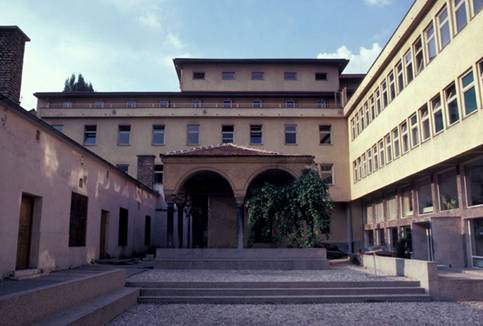
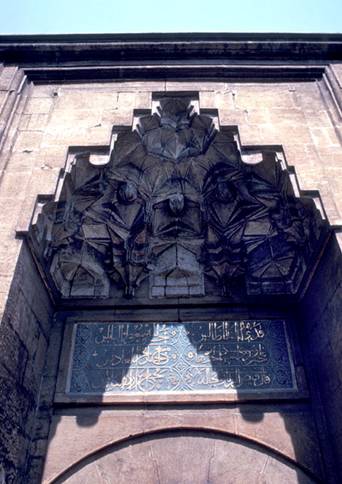

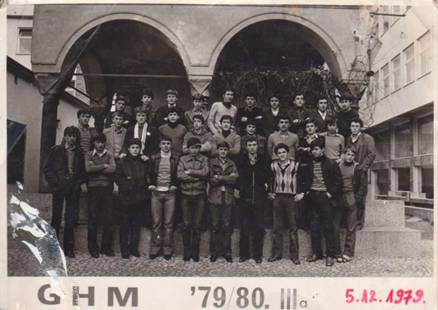
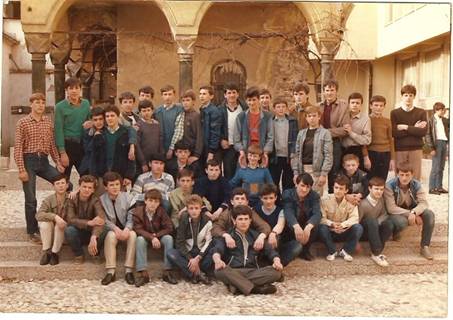

Ghazi Husrev-Bey Madrasah is the oldest educational institutions in Bosnia-Herzegovina and is one of the few in the world which is continuously operating for more than 477 years, which has served as a backbone for the educational system in Bosnia and especially in Sarajevo. His vision had such a power of Khair and Barakah from ALLAH that, right after ever crises, every massacre, cream of the population which came in front and took the responsibility of leadership for Muslims of that time in Bosnia, were mostly the graduates from the Madrasah of Ghazi Husrev-Bey. It is very difficult to find, and only a few examples are in the entire history of the human being for such a fascinating vision and sincerity with the nation as a governor-in-charge. Can you imagine the sincerity and highest lucidity of his vision, right after every 3 times of heavy massacres done by the Anti-Islamic forces, Allah chose nobles and graduates, who were in any sense related to Ghazi Husrev-Bey Madrasah, whether as student or teacher or employee. Let us give you an example:
2.1.1 Bosnian Young Muslims Movement
Young Muslims organization was established in 1939 in Sarajevo, which had several factors involved in the creation of the movement and played a vital role in the history of Bosnia and Herzegovina. The main reason to establish this organization was the emerging conservative spirit of nationalism of Serbs and Croats, the emergence of secularism, increasing threats and challenges from communist and fascistic ideologies, decreasing the importance of Muslims in the region as well as a decline in traditional Bosnian culture and religious factor in society.
At the beginning stage, students from the age group of 16 to 26 became the members from different school and colleges, but the leading role played by the students were mainly from the Madrasah of Ghazi Husrev-Bey. That was the time when the community of young generation lacked in political maturity, acquaintance with modern and social cultures and languages, especially Arabic, geopolitics, the pure essence of religion and leadership qualities. In that era, few visionary young Muslim students took a stand and organized themselves for the sake of ALLAH and his pleasure and for their nation (Muslim Bosnians - Bosniak). They were very much clear about their goals and objective which were achieved later on.
Early this movement was developed by a group of students, who basically initiated a forum of discussion and debate on Islamic subjects. Prominent students who initiated this forum were “Husref Basagic”, “Emin Granov”, “Esad Karadjozovic”, “Tarik Muftic”, “Alija Izetbegovic”, “Ešref Čampara”, “Husref Basagic”, “Nedžib Šaćirbegović”, and “Muammar Sadovic”.

Initially, the activities were limited to non-formal meetings, debates, and discussions. Meanwhile, the organizational structure, main ideological and programmatic guidelines were formulated in accordance with Islam, regional culture, and modern sciences. Officially the foundation of Young Muslim Movement took place in Sarajevo in 1940 but due to world war, entry of movement was declined in Yugoslavian Associations. Fearing dissolution of their movement, young Muslim students immediately joined El-Hidaje (Meaning: The True Path) Association of Ullma from Bosnia and Herzegovina.
Almost after 2 years in July 1942, Young Muslim organization became officially and proclaimed “Youth Section/Wing” of El-Hidaje. All the informal isolated networks and members became under 1 flag and this directional guidance and help from the president “Mehmed Handzic” and vice-president “Qasim Dobraca” gave a milestone with significant impact to improve the performance in the light of Islamic political perspective. By the passage of time, this movement and network of members flourished rapidly all around Bosnia and within a few months, till 1945 it expanded to all major cities of Bosnia and some cities of Yugoslavia. One of the reasons for the growth and expansion of this movement was the ideological, religious, and intellectual building speeches and lectures from the finest Muslim scholar of that time (Mustafa Busuladžić, Mehmed Handžić and Hafiz Claw) which sparked a new fire into the hearts of young boys and girls for their nation and religion. Along with these facts, there was a vacuum of leadership for Muslims of Bosnia which attracted them to join the cause.
During the world war, members of this movement were assigned the task to help the Muslims community with the help of “Al-Hidaje, Merhamet, and Muhajirs”. In this welfare work and arrangements for Muhajirs 5 members were killed. Even that didn’t stop the Young Muslim and they kept on doing their job for the nation. In those times of battle and chaos, the young Muslim organization members remain dignified and did not took apart as “Ustasha Brigade” or engaged themselves in “Ustasha Youth” and none of them was the part of “Ustasha battalions”. This point is very necessary to clear the allegations which were raised upon them from the Serbs and Croats. This wise isolation, resistance against the Nazism, Communism, and opposition against the Communist Youth Union (Union of Communist Youth of Yugoslavia) made them more prominent in the eyes of Muslims.
The government of Yugoslavia banned El-Hidaje in 1945 but youth section (Young Muslims Organisation) kept performing and went underground with their restricted activities till they protested against the military secularization policy of new Government of Yugoslavia. After the end of World War II, this organization gradually restored its position and started operating again. A new set of management was formed, which has the new leadership of Alija Izetbegovic, Nedžib Šaćirbegović, Ešref Čampara and others. In the year 1946 many members were arrested and sent to prison and assassinated after Sarajevo Trial. In the fall of 1947, the leadership of "Young Muslims" was officially appointed and Pepper Hasan, Umar column, Salih Behmen, Halid Kajtaz and Ismet Serdarevic were part of it. Between 1947 and 1948 many members were arrested and put on trial. In 1948 Umar column and Ismet Serdarevic tried to develop the international relations with the Islamic world and got arrested in “Pula”. On 20th and 21st, February 1949 Young Muslim Movement arranged a conference and many important decisions were taken in that conference. It was decided that the new leadership of movement will be given to Hasan Pepper, Halid Kajtaz, Salih Behmen and Tarik Muftić.
After 2 months in April 1949, the government of Yugoslavia started a mass campaign to arrest the members. Most of the leading members were arrested, interrogated and tortured in cells. During trials from 1 to 12 August, four of the founding and leading members Biber Hasan, Khalid Kajtaza, Nusret Fazlibegovića and Umar column were sentenced to death, they were shot in front of a firing squad and many other were arrested, sentenced to long imprisonment ( Alija Izetbegovic, Nedžib Šaćirbegović, Ešref Čampara and many more). Ismet Serdarevic was sentenced to 20 years of imprisonment with labour, confiscation of property and civil right for 5 years. Mahmut Partridge and Tariq Muftić were sentenced to 12 years of imprisonment with labour, confiscation of property and civil right for 4 years. Hilmi Muftić was sentenced to 16 years of imprisonment with labour, confiscation of property and civil right for 4 years. Ramo Habota was sentenced to 8 years of imprisonment with labour, confiscation of property and civil right for 2 years. Ejub (Ayub) was sentenced to 7 years of imprisonment with labour, confiscation of property and civil rights for 1 year. Mariah Kurbegović and Suleiman Muskadić were sentenced to 3 years of imprisonment with labour, confiscation of property and civil rights for 1 year. A young boy “Omer Kovac” a leading and prominent member was killed during imprisonment in the torture room. Nusret Fazlibegović said and wrote in his letter to the rest of the members “Take My Way”, later he was sentenced to death. Umar column one of the bravest gave such an honourable example for the youth, which are still remembered and the even court admitted that after such intense torture his views about the socialism and Islam were not changed. Remaining members were very closely monitored and the activities of the movement almost vanished from the face of Bosnia.
For some time, they remained low profiled but honourable, Masjids were turned into warehouses and Muslim’s cemeteries were converted into toilets. After coming out from prison some of them migrated to other neighbouring countries and remaining few, kept close contact with each other avoiding surveillance of Yugoslavian secret services and re-established the network of organization with new members. As a new leadership of Alija Izetbegovic, and Salih Omer Behmen, Rušid Prguda, Ismet Kasumagić, they gave the organization a fresh spirit, starting gradually with the same strategy as in beginning by Islamic discussion forums, debates and newspapers. The remaining members also re-established the essence of Islam by publications of articles and papers using the platform of “Islamska Vjerska Zajednica” (Islamic Religious Community) or by their own name. The young generation wanted to make Bosnia a sovereign Islamic state out of the influence of socialism and communism and out of the hold of Serbs and Croats, which became a threat to the worldly systems and all Anti-Islamic stakeholders of Yugoslavia. The movement was now more intelligent, best and most intelligent student in the Muslim community was part of it. They learned lessons from the past and continued their efforts and emphasized more on welfare and social networking. They started to print more material in the form of gazette, magazines (Takvim) and newspapers (Rebirth - Islamic informative newspaper), organized several meetings and debates in the Grand Tabacki Masjid. Such activities came under the observation of communists and under “Sarajevo Process” again in August 1983, another wave of ethnic cleansing started for Muslims of Bosnia and most of the main leaders of the organization were imprisoned on the charges of separatism and Islamic fundamentalism. Members were sentenced up to 9 years in jail. Among those arrested members were the former Young Muslims Members “Alija Izetbegovic” who was a graduate from Ghazi Husrev Bey Madrasah, “Omer Behmen, Salih Behmen, Eysref Camparay, and Ismet Kasumagic, as well as the younger intellectuals like Dyzmaludn Latic, Edhem Biycakycic, Hasan Cengiyc, Husain Zivaljy. Mustafa Spahic. Alija Izetbegovic was accused of organizing a group to create and establish an Islamic state in Yugoslavia. It was another attempt to crush and humiliate Bosniak (Bosnian Muslims).
When the members were released from prison, the geopolitics and the national atmosphere were totally changed. Muslims realized that they need a solid political platform to raise their voice otherwise the history of brutal, ruthless, barbaric and destructive anti-Islamic approach will be repeated again and again.
A political party for the Muslim of Bosnia was very much necessary against the evil axis of socialism and communism, which took lives of millions of Muslim in that region to represent their own interest. The former young Muslims organization members and new intellects as fresh blood put the base for the political party and named as Stranka Demokratske Akcije (SDA) in 1991 which became leading political party and only representative for the Muslims of Bosnia. After establishing a political party, “SDA” re-organised several Bosniak organizations which were previously wiped off after World War 2.
This long and restless effort started from a few young graduates from Madrasah in 1939, and with thousands of sacrifices, these students continued till the establishment of an Islamic State as Bosnia-Herzegovina. The Young Muslim Organisation with the passion for re-creating national identity for Muslims was the first step for the community of Bosnia and revived the spirit of Islam in the nation after the world war and several Muslim genocides. The main point to discuss is that most of the prominent leaders like Alija Izetbegovic and many others were graduates from the Ghazi Husrev Bey Madrasah.
There are some worth reading books and columns on the horrifying and terrible history of Bosnia:
By Tarik Muftića as "The seed was sown and it will shoot up";
By Emina Branches as "We were the only opponents";
By Taufik Velagic as "We were boys";
By Alija Izetbegovic as "Young Muslims are one of the strongest resistance to communism in Yugoslavia";
By Munir Gavrankapetanović as "Islam was all our love";
By Salih Behmen as "We wanted one thing: the power of Islam";
By Nedžib Šaćirbegović as "Enthusiasm" Young Muslims”; By Ešref Čampara as "Young Muslims shadows”;
By Emin Granov as “How do we fight”;

The era of Sarajevo under Ottoman administration during the time of Ghazi Husrev Bey was the most glorious period in history for Bosnia. Along with the military campaigns which he had undertaken, Ghazi Husrev-Bey devoted his entire life for the Muslims of Bosnia and especially for Sarajevo Bosniak. During his governorship, he made a Waqf and self willingly he endowed his own property for that Waqf and in this way he endowed a great fortune for the people of Bosnia. His three “Vaqufnamas” (testaments), written in November of 1531, January of 1537 and November of 1537, bear witness to above facts.

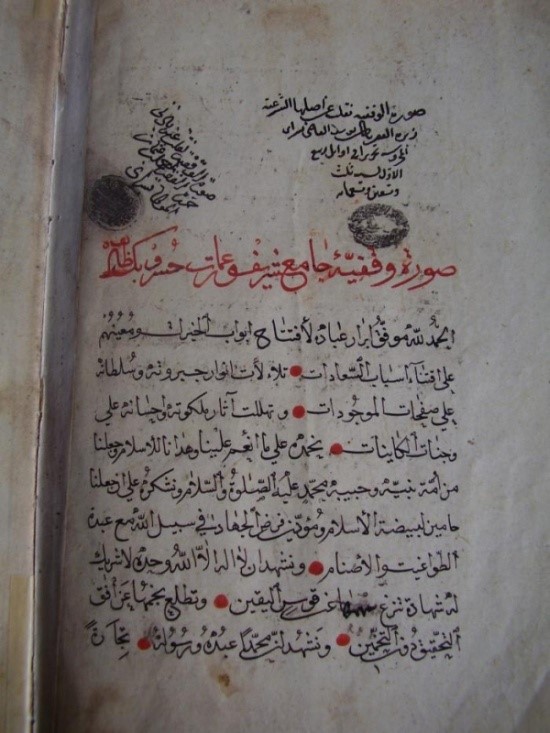
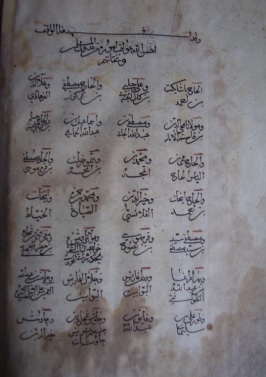
Ghazi Husrev-Bey wrote in his testament for Waqf in 1531 AD (Vision Statement):

"Every wise and rational man will come to understand that This World is transient and an abode of boredom and misfortunes. This World is neither a house nor a dwelling place, it is but a passage through which one enters the house of salvation or Hell, and wise is he who is not deceived by This World; who does not believe in it; who does not look upon it with amorous eyes and thus allows himself to be governed by It. Fortunate is he who learns from his example and applies it the next day and who, while waiting for death, errs not in his work. Good deeds chase away evil and the best of the good deeds is a charity, and the most exalted act of charity is that which lasts forever, and from all the charitable deeds the best is that which forever repeats itself. It is obvious that from all the lasting charitable deeds the most enduring is Waqf. For as long as This World is in existence the benefit of Waqf will not cease nor will it stop to function until the Day of Judgment."
The first testament from 1531 was written for The Masjid, The Imare (Soup kitchen) and the Haniqah (Dervish School). The second testament from 1537 was written for the Madrasah. As governor, he established funds and also gave his own property on a charitable basis for this Waqf. Masjid, Haniqah, Madrasah, Imare were made from that fund and from the remaining amount after the construction of the Madrasah, the best-known books of that time were purchased, and with the third testament from 1537, additional property was purchased and endowed for the maintenance of the Masjid. These three testaments were the baseline documents that made up the legal basis for the formation of the Ghazi Husrev-bey’s Waqf as a complete organisation which will operate as a trust with different objectives as charity and welfare organisation of Bosniak. The testaments also serve as the basic rules and regulation benchmark guideline for this Waqf, which has now turned into a modern charitable trust with a large number of shops, buildings, commercial centres and houses for this self-sustaining organisation. The main objective of the Waqf was to create a trust which will lay down the organisational structure for the Masjids and Madrasah and will manage them as well. Since 484 years this trust is serving as a visionary and exemplary organisation for the betterment of the Muslims of Bosnia and Herzegovina.
Ghazi Husrev Bey also established a library in 1537 which is still serving the nation and holds one of the most important collections of Islamic manuscripts in Bosnia-Herzegovina, including many originally donated by Ghazi Husrev-Bey. The Ghazi Husrev-Bey Library in Sarajevo was the first library about which is known with certainty when it was founded. In the “Vaqufnama” of his Madrasah Ghazi Husrev-Bey stated that: " ... whatever was left from the funds for the construction, it should be used for the purchase of good books, which would be utilized in the mentioned Madrasah, for those who would read them and for those who are involved in science to copy from those books “. For this reason, this library is considered to be the first and oldest cultural institution of Bosniak.
Until 1863, the library was a part of Madrasah but at the instructions of Topal Osman Pasha, the governor of Bosnia, the Ghazi Husrev-Bey Waqf administration built one larger room below the Masjid's minaret for the library. It was located there until 1935 but due to an increase in the library book collection, it was moved into a storage area in front of the Emperor's Masjid, where it remained until the beginning of the aggression against Bosnia and Herzegovina in 1992. In April 1992, for safety reasons, the books were moved to several locations in the city and this idea was given by one of the most leading students of that library Mr Alija Izetbegovic. During the four-year siege and war, for the same reasons many times the book collection was moved from one location to another, and thus was completely preserved. After aggression on Bosnia and Herzegovina, the Library was located in the building next to the women's section of the Ghazi Husrev-Bey Madrasah in Drvenija in Hamdije Kreševljakovica 58th Street, where it remained until 2013. To accommodate the Ghazi Husrev-bey’s library more books and collections, a new building was built in Ghazi Husrev-Bey 46 Street, in the heart of the Old Town and is currently at that location.
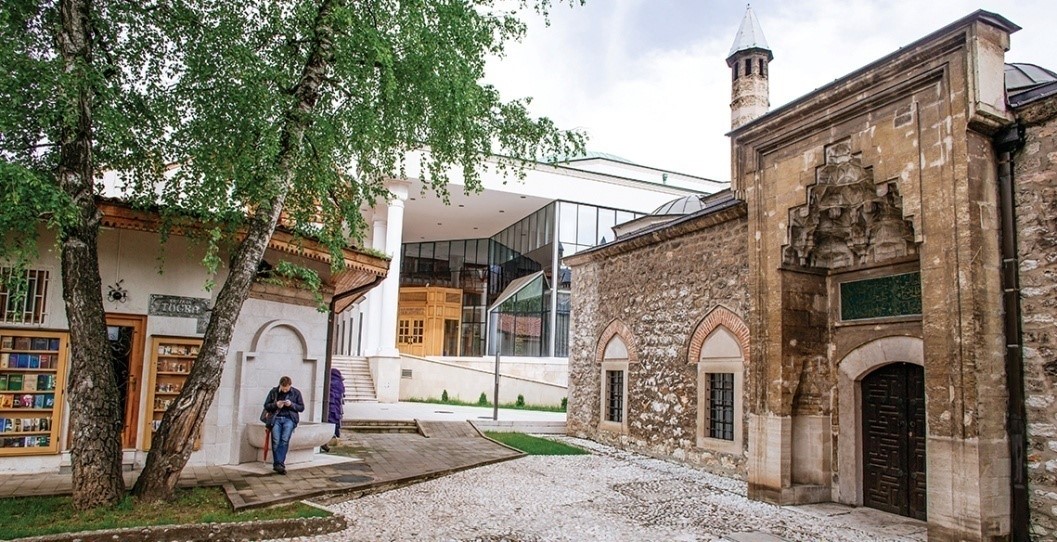

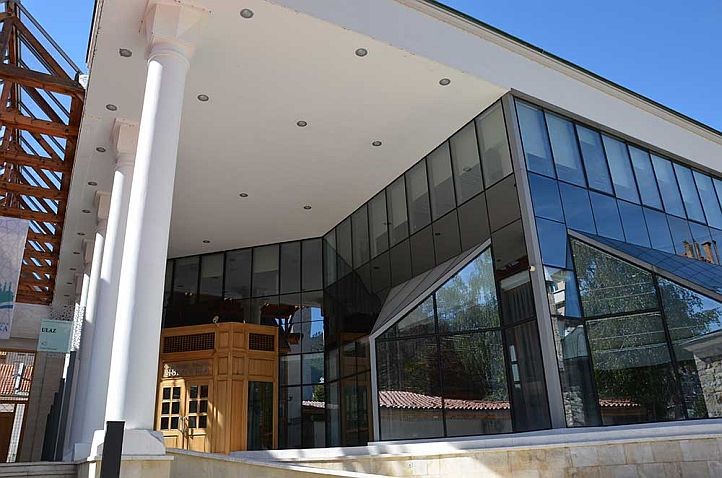
The basic collections of the Library consist of manuscripts in Arabic, Turkish and Persian. The total amount is around 10,000, which makes this Library one of the largest in Europe and it is well known throughout the world. The overall library holdings today are 60,000 units. Apart from the already mentioned manuscripts' collections, there are other printed books, periodicals and historical documents in three Oriental languages, Bosnian and some other European languages. The periodicals' section keeps the oldest newspapers and magazines printed in Bosnia and Herzegovina, whereas the archives sections consist of documents related to the history of Bosnia and Herzegovina in the period of the Ottoman rule. It also has an important collection of 1,400 “Vaqufnama”, and 86 “Sigils” (court records and protocols) from the Sharia Court in Sarajevo. The basic functions of the Library are acquisition, cataloguing, processing, keeping and offering the collections for use in scientific and research purposes for anybody involved in research of these disciplines.
One of the most fascinating historical Masjid of the world is Ghazi Husrev-Bey Masjid (Bosnian: Gazi Husrev-begova Džamija, Turkish: Gazi Hüsrev Bey Cami), and it is in the heart of Sarajevo, Bosnia and Herzegovina. It is considered one of the most important Islamic structure in the country and one of the world’s finest examples of Ottoman architecture and represents one of the most magnificent works of architecture in that region. It is located in the “Baščaršija” neighbourhood in the “Stari Grad Municipality” area. The Gazi Husrev-beg Masjid was built by the famous Ottoman architect Adzem Esir Ali “Alaüddin”, who also built the Yavuz Selim Masjid in Istanbul for the Sultan Selim I and he was also the leading founder of School Of Architecture of Istanbul. The Masjid was financed and built-in 1530-31 (937 AH). One year later a “Maktab” was built beside the mosque main hall and a “Hanikah” for religious and spiritual teachings. In 1537 the testament for Madrasah was written, for that purpose and construction of Masjid, Gazi Husrev-bey endowed seven hundred thousand dinars. During the period of the Austro-Hungarian Empire in 1898, Gazi Husrev-bey Masjid was the first in the world to receive electricity and electric fittings and lightings.
The Ghazi Husrev-bey’s Masjid or it is simply known among the people as the Bey’s Masjid, as far as its design, shape and dimensions are concerned, it represents a work of special interest for the study of Ottoman architecture. The Masjid has a complex architectural rendition and design. The front part of the Masjid is dominated by heavy marble pillars, which carry the arches of the Masjid colonnade. These pillars separate the colonnade into five rectangular subsections of which every single one is connected by a dome. The main entrance into the Masjid is beautifully adorned with stylised arabesques, wall ornamentation, gilding and marble. The Masjid also serves as a meeting point for the youth after prayers.
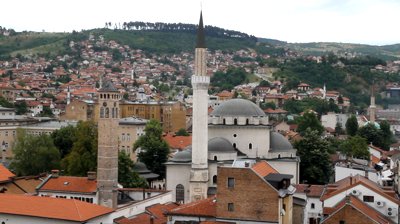
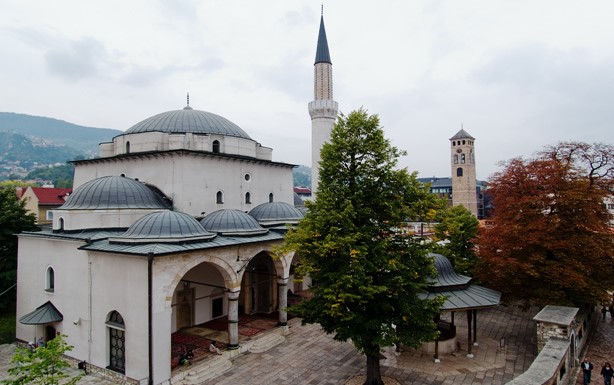



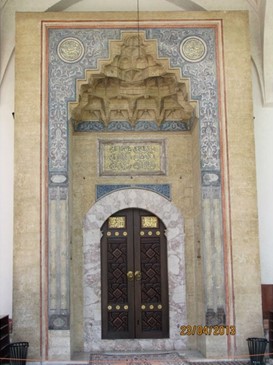
Above the main Masjid entrance we can see there is a stone tablet, 120 cm X 60 cm in size, on which verses in Arabic language are carved. The inscription is placed into six elliptical spaces edged on its sides and through the middle with arabesques. The inscription text is partly vocalised. The inscription surface is blue and the letters are gold plated.

The translation of the transcription is as follows:
“The Masjid of the good people Husrev-bey
buildeth in the name of God (as) a home for those who prostrate themselves.
He is the destroyer of the foe, helper of the champions of faith,
Propagator of benefaction, helper of the pious.
God inspireth us with its verse:
(This is) the meeting place of benefactors, a home of those beholden to God.”
Watch Video - TRT Awaz
Gazi Hüsrev Bey Camii ve Türbesi - Bosna Hersek - Ay Yıldızın İzinde - TRT Avaz




